Is it just rosy cheeks or could it be rosacea? What is a gentle rosacea treatment that actually WORKS? Can I cure my rosacea? If you’ve asked any of these questions in the past or present, this post is for you. Let’s chat about what rosacea is and how you can treat it at home. Let’s quell that redness together!
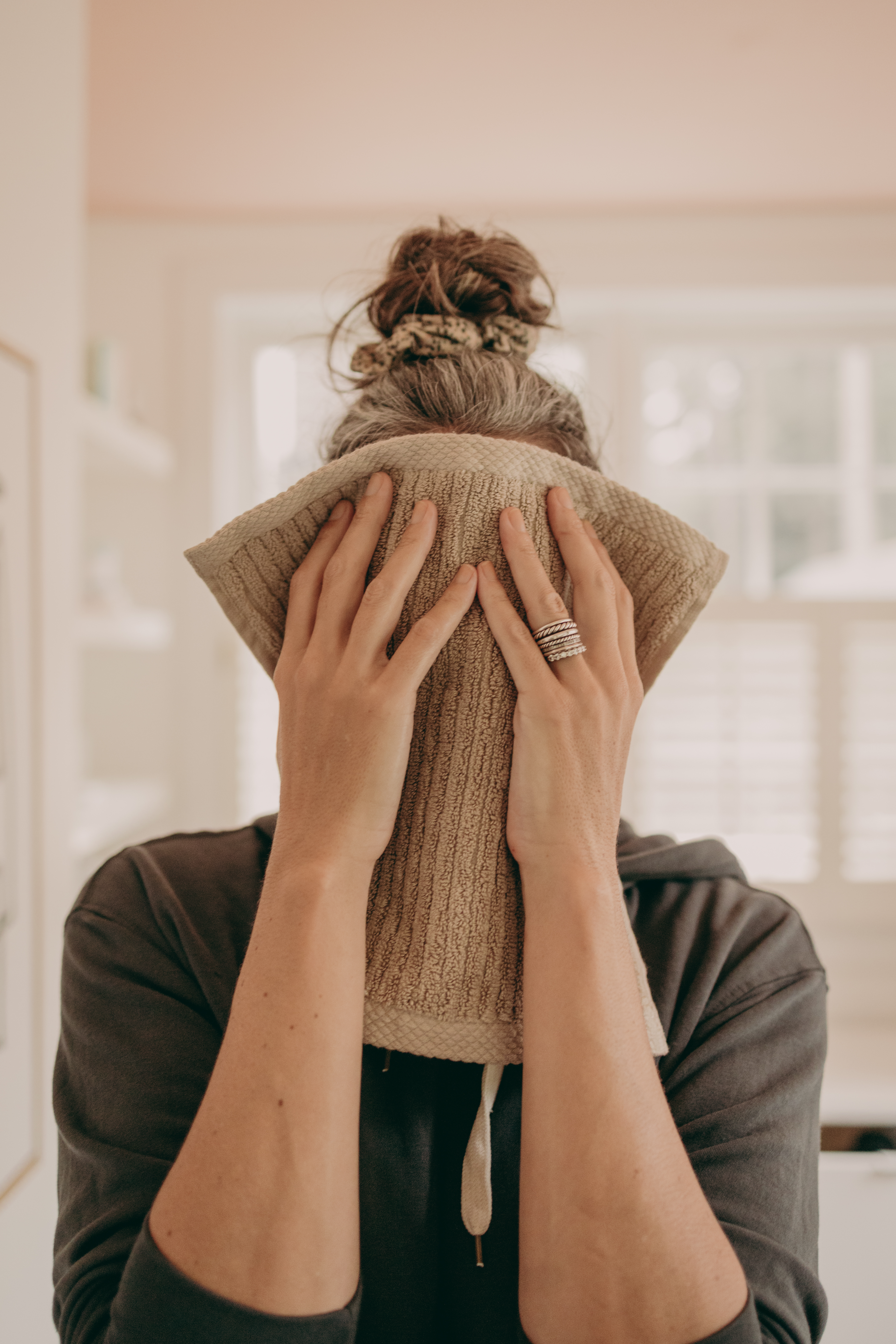
By: Hayley Wood L.E. N.T.P.
Meet the Expert
Hayley Wood
Hayley Wood is a licensed esthetician, nutritional therapy practitioner, and founder of Therapeutic Skin Coach. With 16 years of experience in holistic skincare and education, Hayley has a passion for skin health education and offers custom plant-based facials in Dallas, Texas as well as online consultations and classes.
IN THIS POST:
- What is rosacea?
- What skincare routine is best for rosacea?
- What skincare ingredients are good for rosacea treatment?
Rosacea is a diagnosis that impacts more than 14 million people—and it’s still considered to be one of the most misunderstood skin conditions. It’s both often mistaken for acne and it’s often missed in those with darker complexions.
On top of that, rosacea treatments have advanced sloooowly over the last few decades, making it difficult for those suffering from it to truly find relief. Ugh, right?
But if you’re struggling with rosacea and reading this, don’t lose hope! We have a comprehensive breakdown of what the condition is and our top picks to help support and calm your skin.
Before we dive in, here’s the caveat: rosacea treatment differs from person to person, and we recommend seeking professional support when struggling with this or any other inflammatory skin condition.
RELATED: Skip Skin Inflammation: Try These Foods for Skincare
What IS rosacea?
In order to try to understand this delicate skin condition, let’s start with defining rosacea. Is it just rosy cheeks or is it more complicated than that?
What does rosacea look like?
Rosacea is a skin condition that includes symptoms ranging from facial redness, skin thickening, bumps, and visible vascularity (blood vessels) on the skin. Rosacea can occur in just about anyone, but is more common in people ages 30 and up.
What causes rosacea?
There is no exact known cause or cure for rosacea, but don’t worry, it is a completely non-threatening, treatable skin condition. According to the American Academy of Dermatology Association, possible rosacea causes include:
- Genetics
- h.pylori gut infection
- specific skin bacteria that triggers an immune response
- inability to process the skin protein cathelicidin
- a demodex mite living in the skin
According to the National Rosacea Society, “Recent studies have shown that this facial redness is likely to be the start of an inflammatory continuum initiated by a combination of neurovascular dysregulation and the innate immune system.”
Because of the connection of rosacea and the immune system, many individuals treating their rosacea find relief in treating their skin both at the symptom and the root level for long term results. rosacea treatment can be determined by your symptoms and experience with it.
How do you get a rosacea diagnosis?
Before you start experimenting with possible rosacea protocols found online, it’s important to get properly diagnosed. You can get diagnosed by a dermatologist if you are suspected of having rosacea, as not all redness in the skin qualifies as rosacea. Licensed estheticians are also able to evaluate the skin and should be able to help you determine whether a diagnosis is necessary or not.
RELATED: Skincare for Sensitive Skin
What are rosacea symptoms?
Rosacea symptoms differ from case to case. You don’t have to have every symptom in order to have rosacea, but it’s important to note if you have 1 or more of the following symptoms occurring frequently—that’s probably a sign to get yourself to a skin health professional for support.
We recommend keeping a log of your symptoms to share with your esthetician and/or dermatologist. This way, a treatment plan can also include lifestyle and diet support as well as a curated topical skincare routine.
Determining factors of rosacea usually include a consistency of certain common rosacea symptoms. Common rosacea symptoms include:
- Swelling. When the face is experiencing puffiness and is actively uncomfortable.
- Flushing. This redness can appear in a shape like a butterfly across the cheeks and nose, in other patches or all over the face while lasting some time. It can also feel warm to the touch.
- Bumps. This can be both breakout bumps if someone is struggling with acne rosacea, or bumps from growths on the skin due to the rosacea.
- Vascularity. This is referencing the visibility of capillaries on the skin. It looks like little blood vessels under a delicate barrier of skin.
- Irritation. Irritation can come in the form of sensation which can eventually become a visible symptom.
- Dryness. Lack of oil production in the skin.
Another way to help determine if you have rosacea or not, as well as help determine possible solutions to support your rosacea would be to know your skin triggers. Skin triggers are the catalyst of a flare in rosacea making the rosacea much more visible. Once you understand your skin triggers, you can manage your flares by supporting your symptoms at the root cause. Common rosacea triggers include:
- If you stay red after being exposed to heat for an extended period of time. This can be from weather, exercise or even a hot shower. In order to support this trigger, monitor the temperature of the water you use when you shower, bath and wash your face.
- Spicy foods and/or alcohol can trigger redness in the skin that lingers after eating/drinking. If you experience this, make sure to limit your intake and find a list of calming and cooling foods to help bring comfort back to your skin.
- Sensitivity to skincare formulations, but especially active ingredients from vitamin C to retinoids. Most people with rosacea have less tolerance to active skincare. Even if your skin is experiencing acne with your rosacea, it’s still best to treat your skin with simple, calming and anti-inflammatory ingredients only.
- Flared skin during high stress times or transitional stages. Perhaps your skin struggles to make it through a seasonal change without getting red and irritated. Or maybe a stressful event (holidays, big work presentations, having kids) is showing on your skin more than you’d like. This trigger is certainly connected to your immune response when your nervous system needs extra support. Make sure to take care of your health as a whole by getting rest, supporting your immune system and being extra gentle with yourself.
What skincare routine is best for rosacea?
Finding your skin care solutions for rosacea can take some trial and error so we recommend sticking to a few rosacea rules in order to optimize support and recovery.
Remember that less is more
Even though a 10-step routine has become popular over the last several years, this trend would not be suitable for people with rosacea. The skin is much more delicate and only requires gentle, consistent maintenance. An ideal routine consists of:
- A gentle cream cleanser for both AM and PM
- A hydrating calming mist for both AM and PM
- A barrier protecting moisturizer for both AM and PM
- An appropriate, mineral-based SPF for AM use, of course. Check out how our resident sensitive skin team member Nicolle describes her rosy skin’s reaction to TNK’s top SPF picks for recs.
Keep your skin’s barrier supported
It may be tempting to exfoliate your skin when rosacea skin is experiencing bumpy texture—but rosacea-prone the skin is far too delicate for that. We suggest using cleansing towels designed to support the skin’s barrier while also giving you an effective clean, like these organic cotton wash cloths. Another supportive way to nurture your skin’s barrier would be to invest in a water filter for your skin like this one from Filter Baby.
RELATED: My top picks from Fitglow Beauty.
What skincare ingredients are good for rosacea treatment?
Getting familiar with ingredients that are ideal for rosacea will also help empower you to make conscious choices for your flared skin. As a rule, it’s best to stick to calming ingredient lists with little to no essential oil content. Skipping active ingredients in skincare is also a good choice—harsh scrubs and exfoliants are not friends with rosacea prone skin. Our top choices for calming, rosacea approved ingredients are common ones you’ll find in lots of better-for-you skincare.
Green tea
Green tea is a top ingredient to help support rosacea sufferers because of its anti-inflammatory powers as well as its antioxidant properties. This ingredient can help provide much support to rosacea sufferers.
TNK green tea product picks
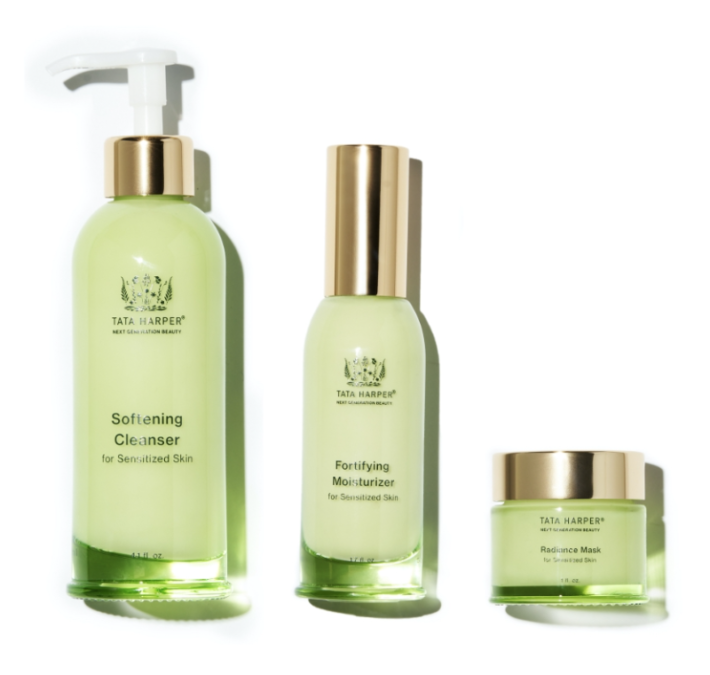
Tata Harper Reactive Skin Essentials | $286
We recommend the Tata Harper 3-step reactive skin routine (Softening Cleanser, Radiance Mask & Fortifying Moisturizer) for an introduction to green tea extract, as well as many other skincare ingredients to help support rosacea.
Save: Use code NEWKNEW15 to save 15% on your first order online or in store at AILLEA. Some exclusions apply.
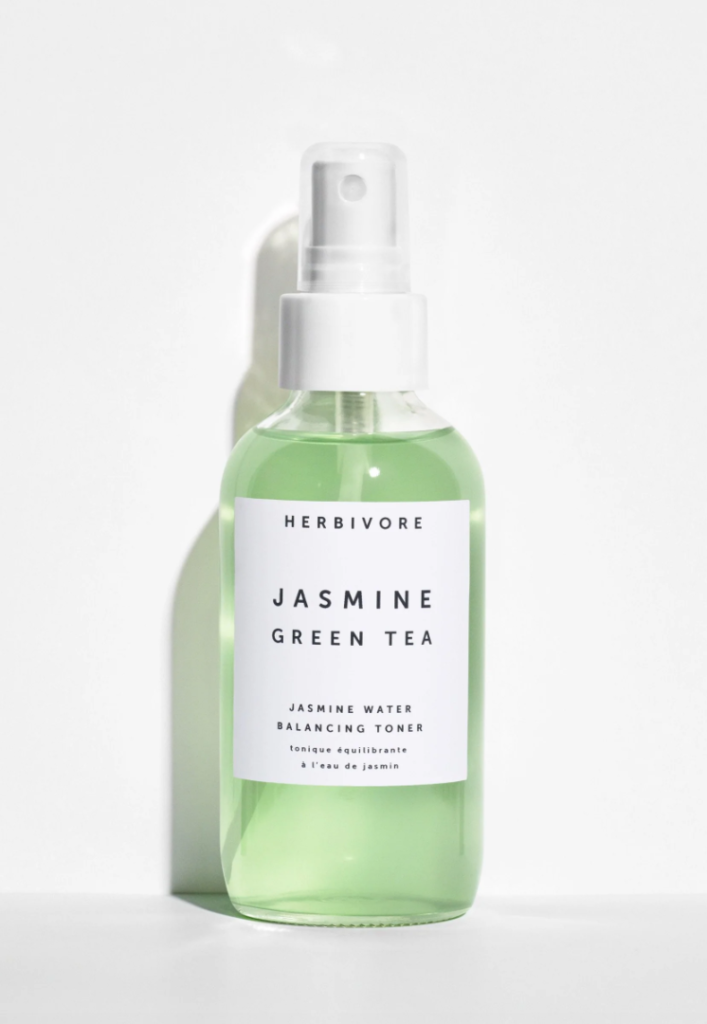
Herbivore Botanicals Jasmine Green Tea Toner | $39
A pH balancing toner that also helps with oil control (and contains aloe, another rosacea-friendly ingredient!).
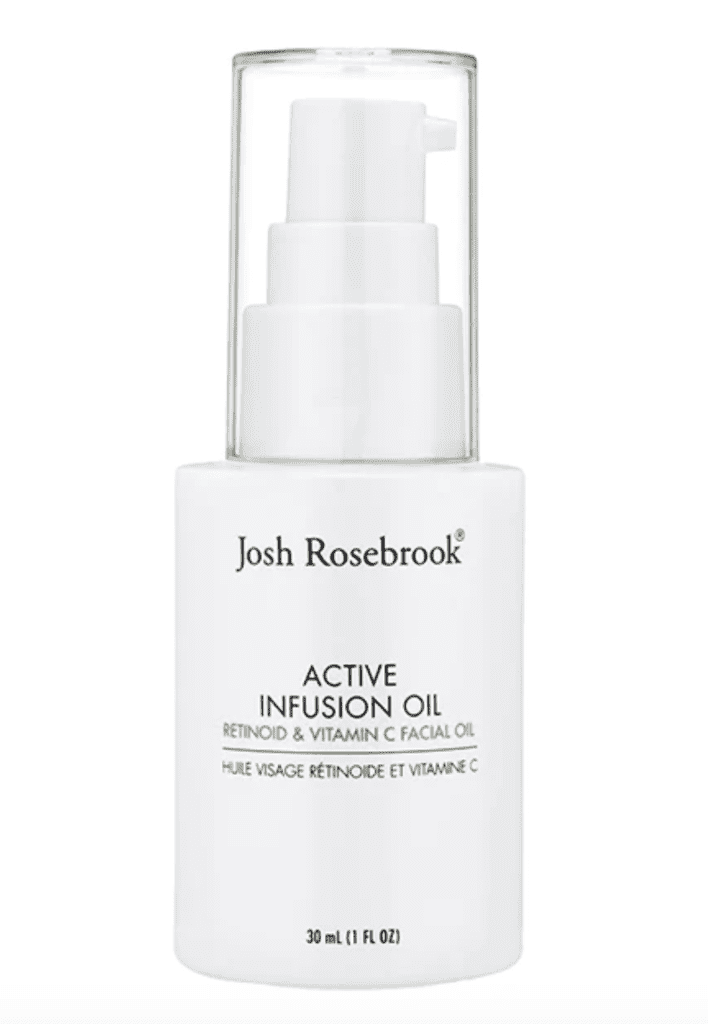
Josh Rosebrook Active Infusion Oil | $80
If you’re looking for something to smooth skin’s texture without being irritating, try this Josh Rosebrook formula, which is suitable for sensitive and rosacea proline skin (even though “active” is in the product name!). Green tea is a superpower ingredient in this formula
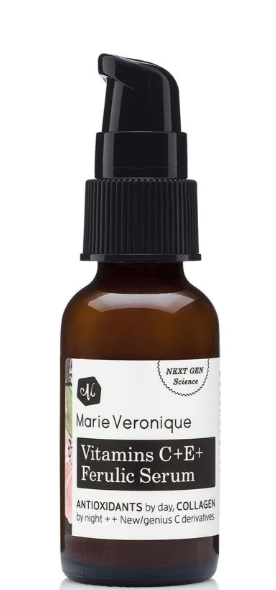
Marie Veronique Vitamin C + E + Ferulic Serum | $95
Green tea is the FIRST ingredient in this essential-oil-free serum, which helps to boost your skin’s ability to neutralize free radicals, all while providing soothing relief.
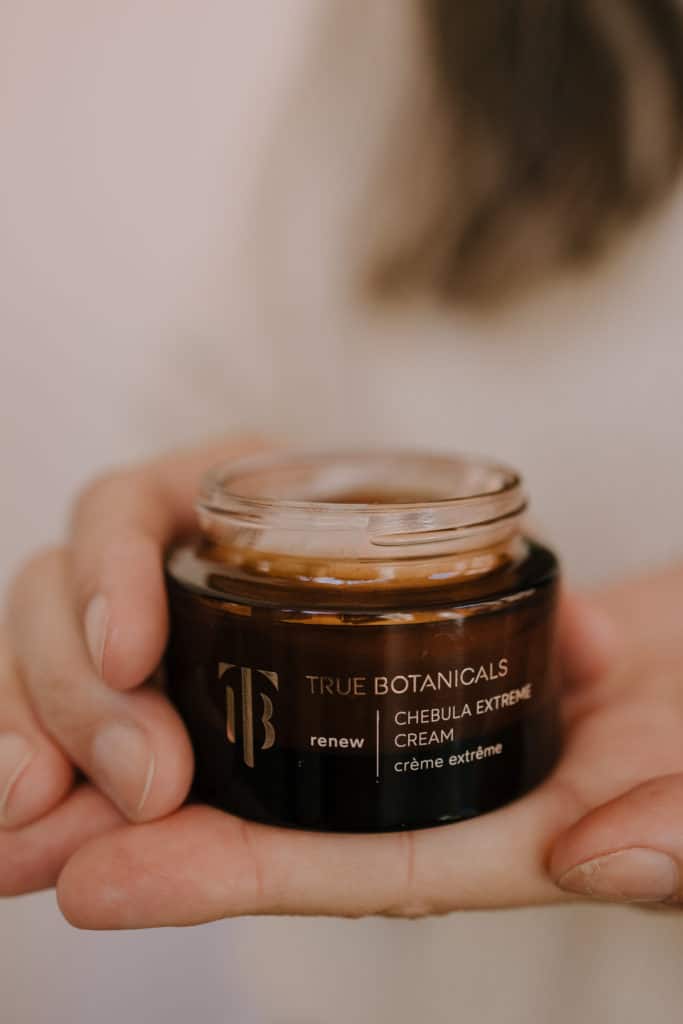
True Botanicals Renew Chebula Extreme Cream | $110
Another powerhouse with green tea as the first ingredient, this thick cream is great for the winter months or for skin that’s reactive AND dry (a not-uncommon combo). Its second ingredient is aloe, so you’re getting a one-two punch of hydration and calming (plus, chebula is an incredibly protective ingredient).
Save: Code TNK10 will save you 10% off your order at True Botanicals.
Rose
Rose is known as a soothing ingredient for both the skin and the nervous system. Rose absolute has been studied to have strong beneficial effects on our cortisol levels and help us destress. It is a wonderful ingredient for those suffering from inflammation in their skin due to rosacea.
TNK rose product picks
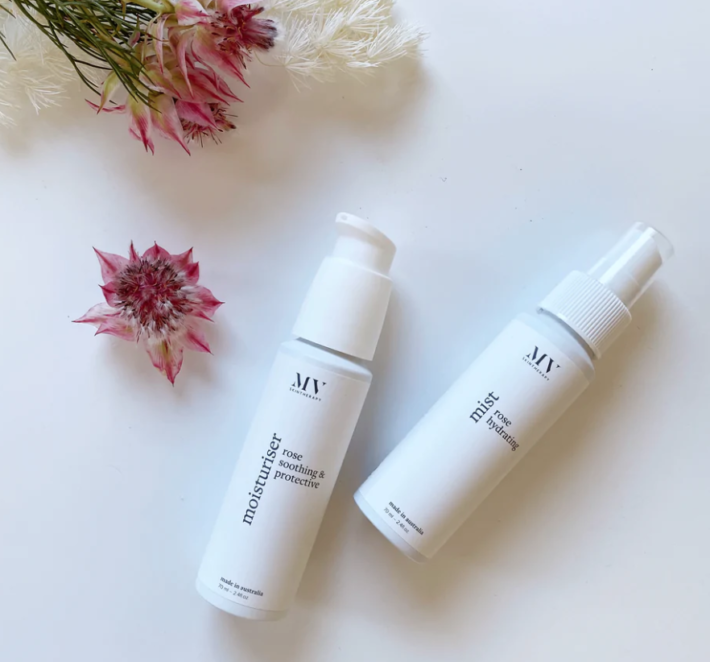
MV Skin Therapy The Perfect Pair | $ 152
We recommend this moisturizer and mist duo from MV skincare to help introduce the healing benefits of rose to your skincare.
Save: Code THENEWKNEW15 will save you 15% on your first order at The Detox Market.
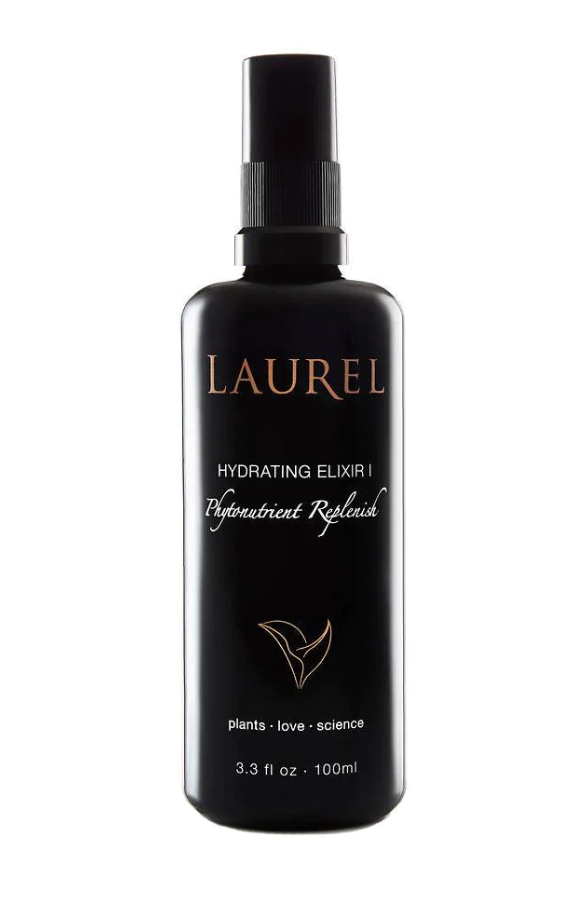
Laurel Skin Hydrating Elixir 1 | $64
You want rose? You got it with this chock-full-of-rose toner. Explicitly for sensitive, reactive, rosacea-prone skin, Laurel’s hydrating mist/serum combination is made of artisan distilled single-farm hydrosols, along with a combination of house made whole plant extracts and whole plant extracts made by local herbalists. YUM.
Save: Code THENEWKNEW15 will save you 15% on your first order at The Detox Market.
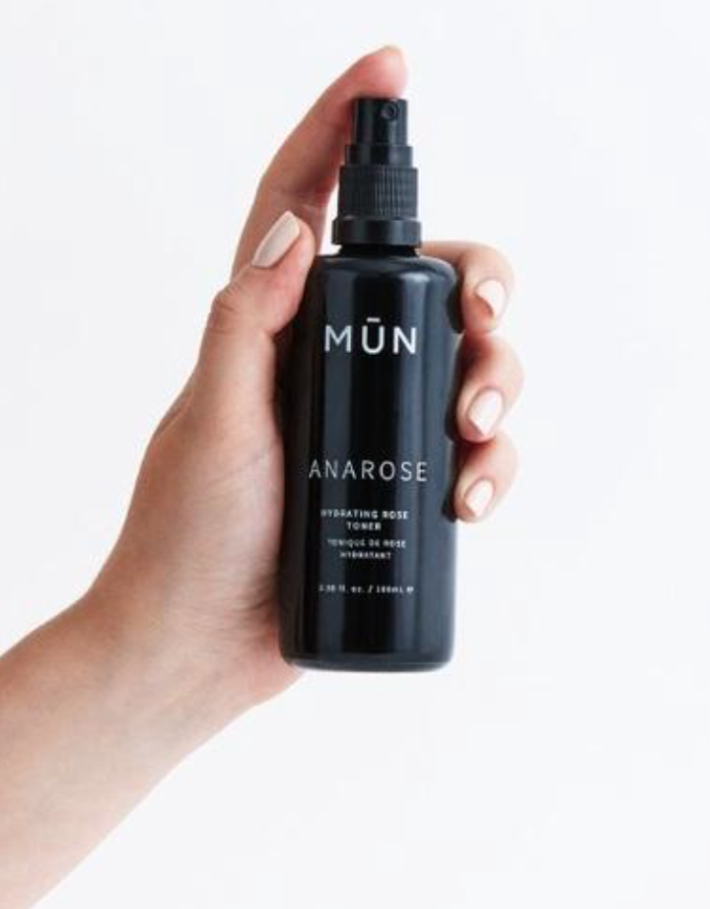
MŪN Anarose Hydrating Rose Toner | $70
Bulgarian Rosewater instantly soothes even the most sensitive skin while hyaluronic acid firms and provides long-lasting hydration. A combination of rose, jasmine and daisy extracts recreate the velvety sensation of petals on your skin. LOVE this one, which also contains aloe for an extra soothing effect.
Save: Code THENEWKNEW15 will save you 15% on your first order at The Detox Market. Or use code THENEWKNEW to save 10% at The Choosy Chick.
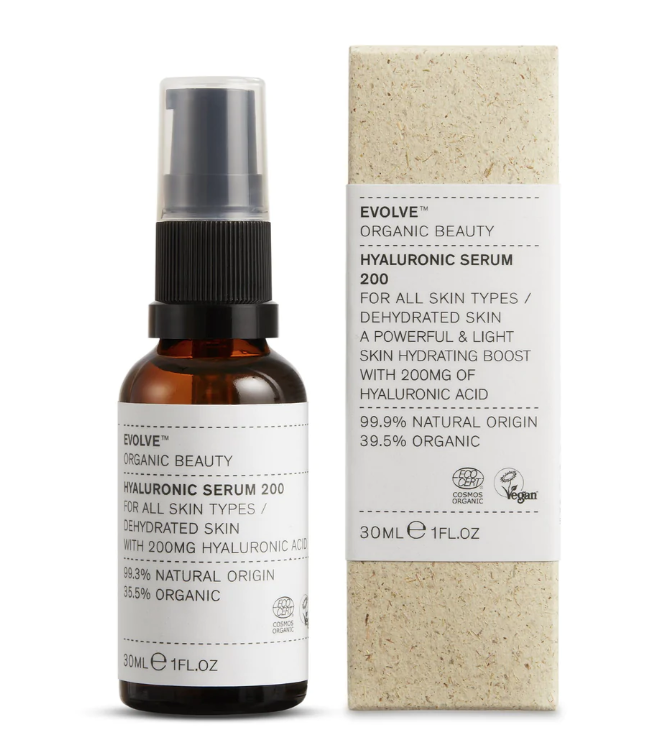
Evolve Organic Beauty Hyaluronic Serum 200 | $48
Rosewater is the second ingredient (after water) in this hydrating serum that also boasts soothing aloe
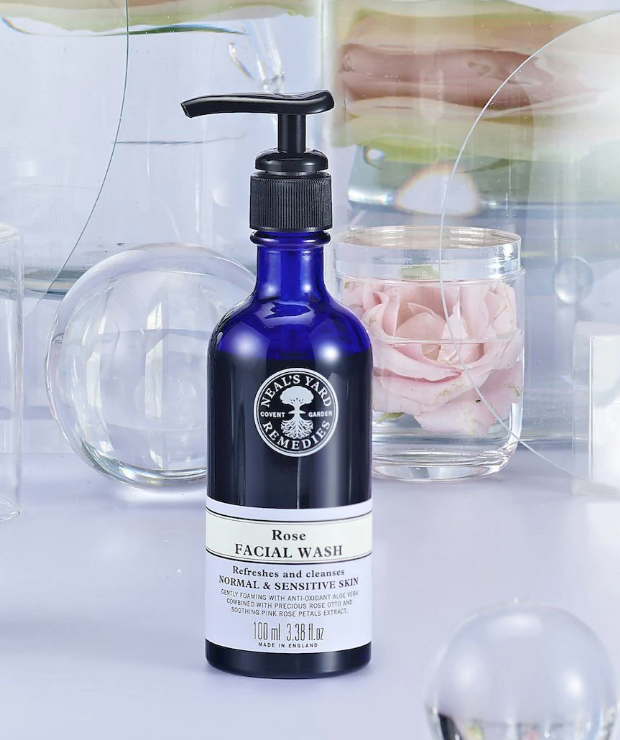
Neal’s Yard Remedies Rose Facial Wash | $26
With two types of rose flower extracts AND aloe, this simple, gentle foaming face wash is an easy pick for rosacea-prone skin.
Aloe
Aloe has cooling, calming, and restoring benefits that can bring much needed relief to a person struggling with the skin flares of rosacea. Think of how soothing it feels to apply after a sunburn and that is the daily relief needed for a person with active rosacea.
TNK aloe product picks
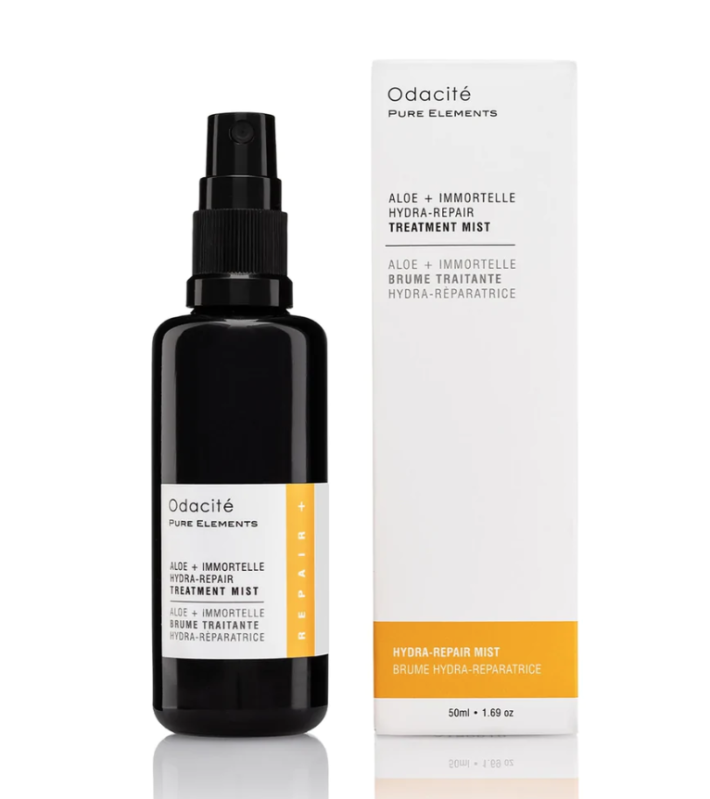
Odacite Aloe + Immortelle Hydrarepair Treatment Mist | $48
The combination of aloe, hyaluronic acid, and immortelle, another calming ingredient, in the Odacite Aloe + Immortelle Hydrarepair treatment mist is a must for soothing rosacea skin throughout the day.
Save: Code THENEWKNEW15 will save you 15% on your first order at The Detox Market.
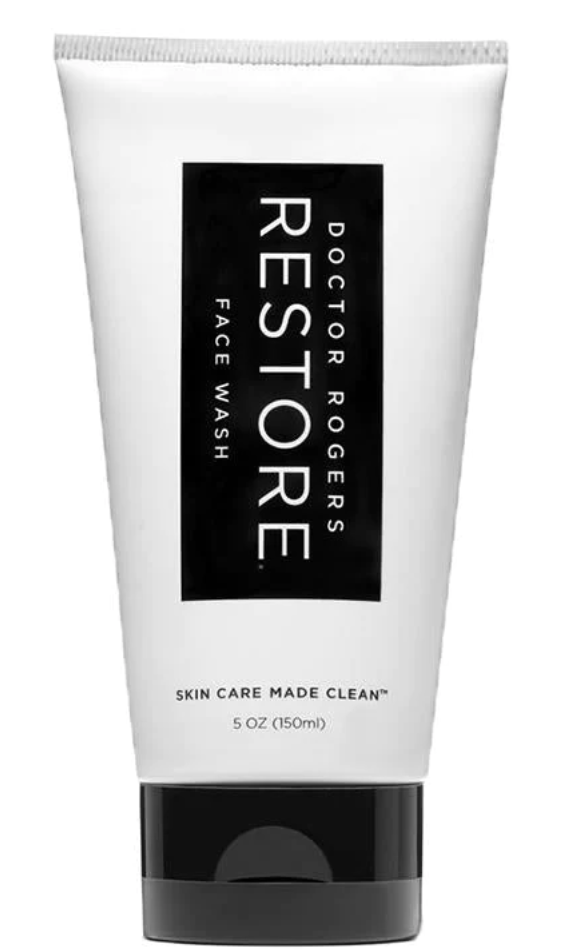
Doctor Rogers Restore Face Wash | $42
An incredibly simple ingredient list that focuses on aloe as its hero ingredients and is a great intro into gentle cleansers for rosacea-prone skin.
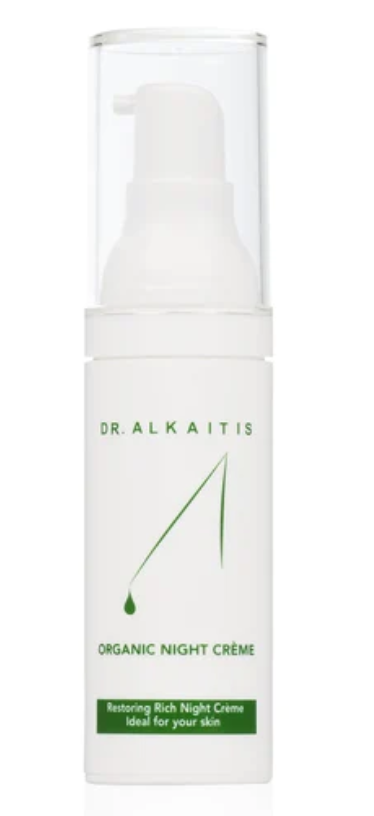
Dr. Alkaitis Organic Night Créme | $72
A base of aloe that also contains chamomile, rose and other soothing ingredients, this is a calming, thicker cream for overnight treatments.
Save: Code THENEWKNEW15 will save you 15% on your first order at The Detox Market.
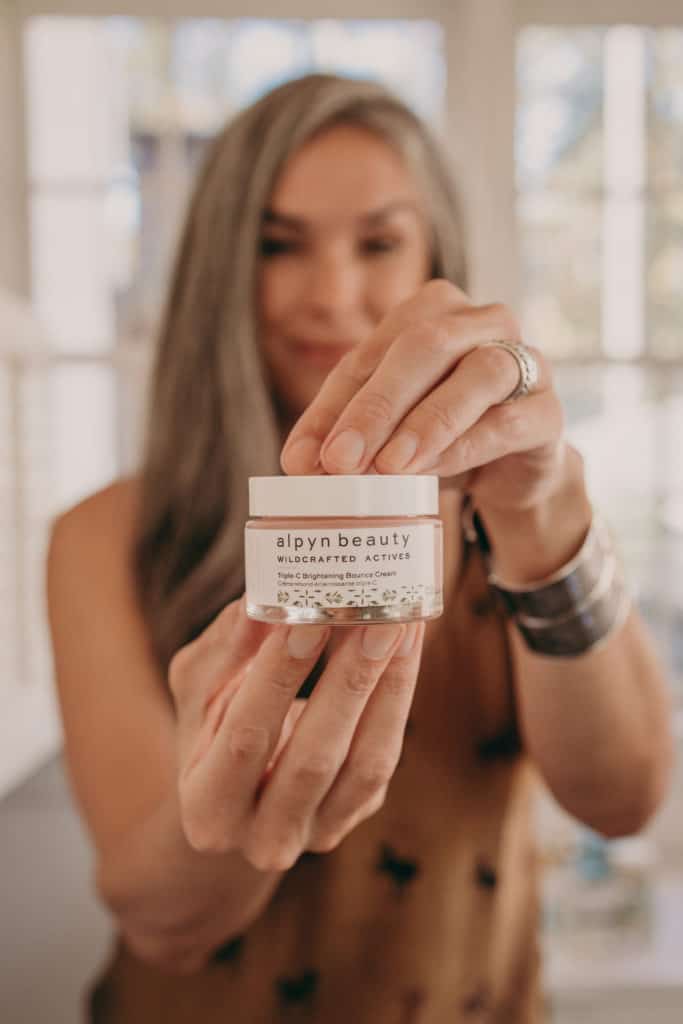
Alpyn Beauty’s Triple C Brightening Bounce Cream | $49
This formula made TNK’s top products of 2021 for a reason—it truly delivers on that “bounce” promise. AND it’s got 50% aloe in its formula list, which is basically all you need to know if you’re looking for an effective moisturizer.
Save: Use code NEWKNEW15 to save 15% on your first order online or in store at AILLEA. Some exclusions apply.
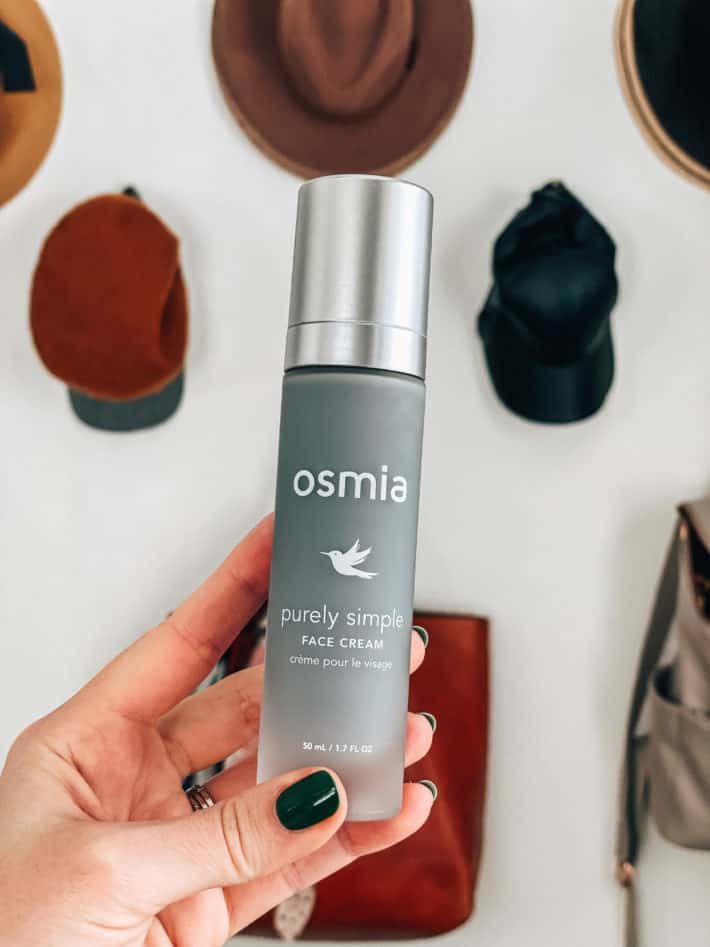
Osmia Purely Simple Face Cream | $62
Another face cream with the first ingredient of aloe, this formula combines powerful plant-based ingredients suitable for sensitive or dermatitis-prone skin. Dr. Sarah Villafranco, founder of Osmia, created this especially for reactive skin, rosacea included.
Save: Code THENEWKNEW15 will save you 15% on your first order at The Detox Market.
Chamomile
Chamomile is a flower known for calming and cooling skin. It can support the skin when experiencing heat, redness, and breakouts to help calm inflammation.
TNK chamomile product picks
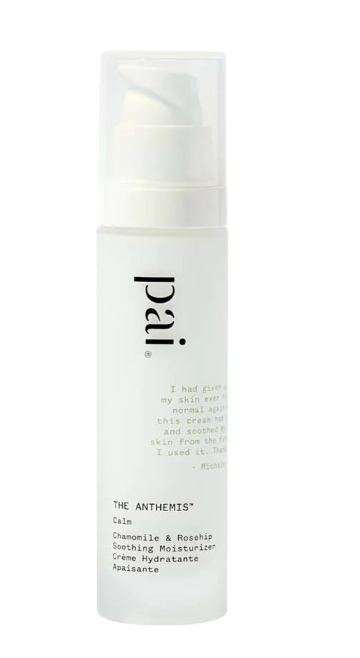
Pai The Anthemis Soothing Moisturizer | $59
Formerly known as the Pai Chamomile and Rosehip soothing moisturizer, this updated formula is a great way to nourish the skin while feeding it the calming nutrients of chamomile along with other soothing ingredients. This moisturizer is also lovely for protecting the skin from external elements that may cause stress to delicate, rosacea skin.
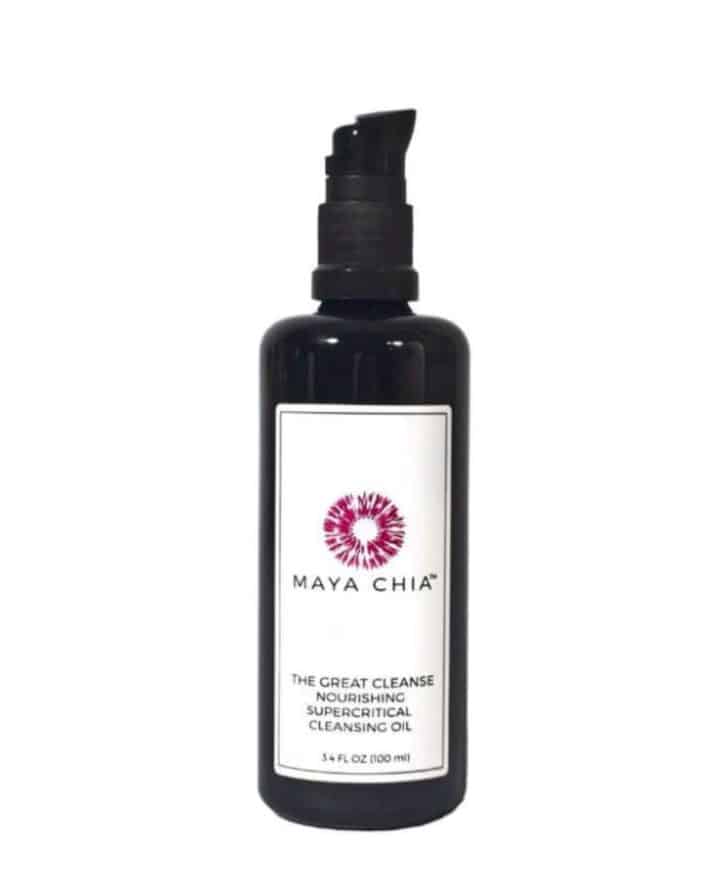
Maya Chia The Great Cleanse | $48
Chamomile is one of the essential oils in this oil cleanser that’s strong enough to remove makeup, but gentle enough to be safe for rosacea-prone skin.
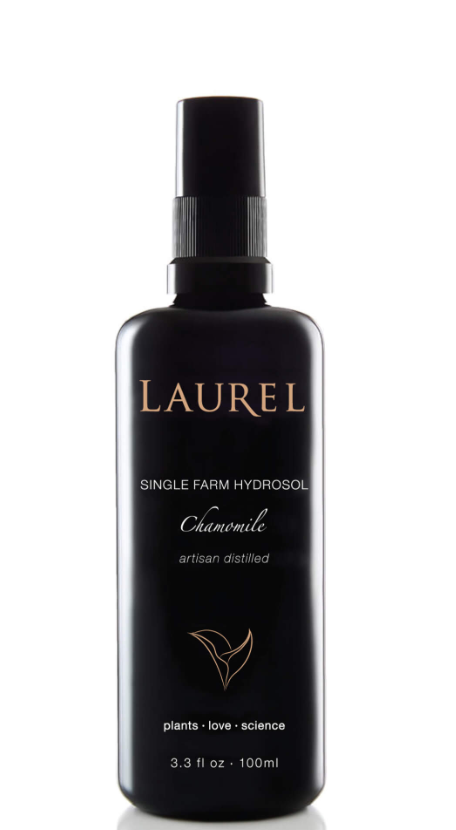
Laurel Skin Chamomile Single Farm Hydrosol | $38
This seasonal / limited quantity hydrosol is a TOP pick when it comes to chamomile and / or product for reactive skin. German Chamomile Hydrosol is the ultimate cooler, soother, and reliever for reactive, inflamed or acneic skin. AND the soothing scent is calming to your nerves to boot.
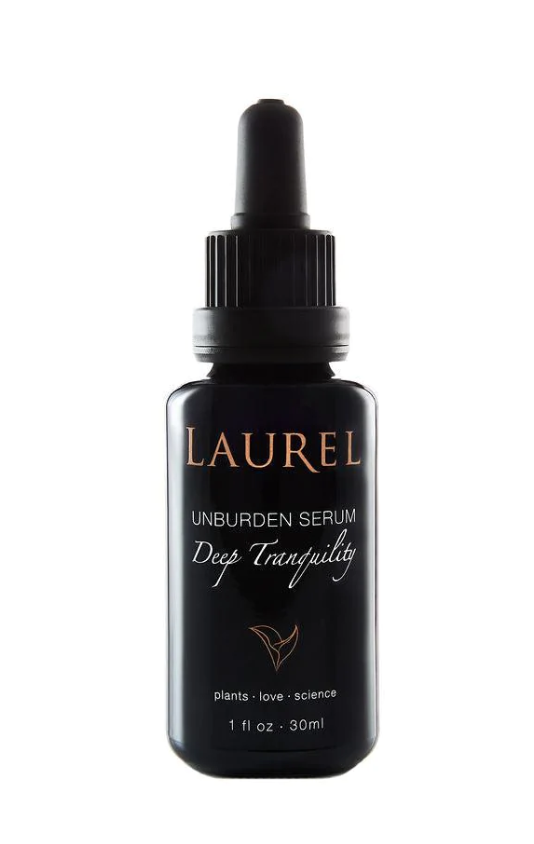
Laurel Skin Unburden Serum | $96
Laurel does it again with THREE kinds of chamomile in this serum designed to support all skin functions by lifting the burden of inflammation, the root cause of all secondary skin symptoms; including but not limited to acne, rosacea, redness, broken capillaries, excessive dryness, and loss of elasticity.
Save: Code THENEWKNEW15 will save you 15% on your first order at The Detox Market.
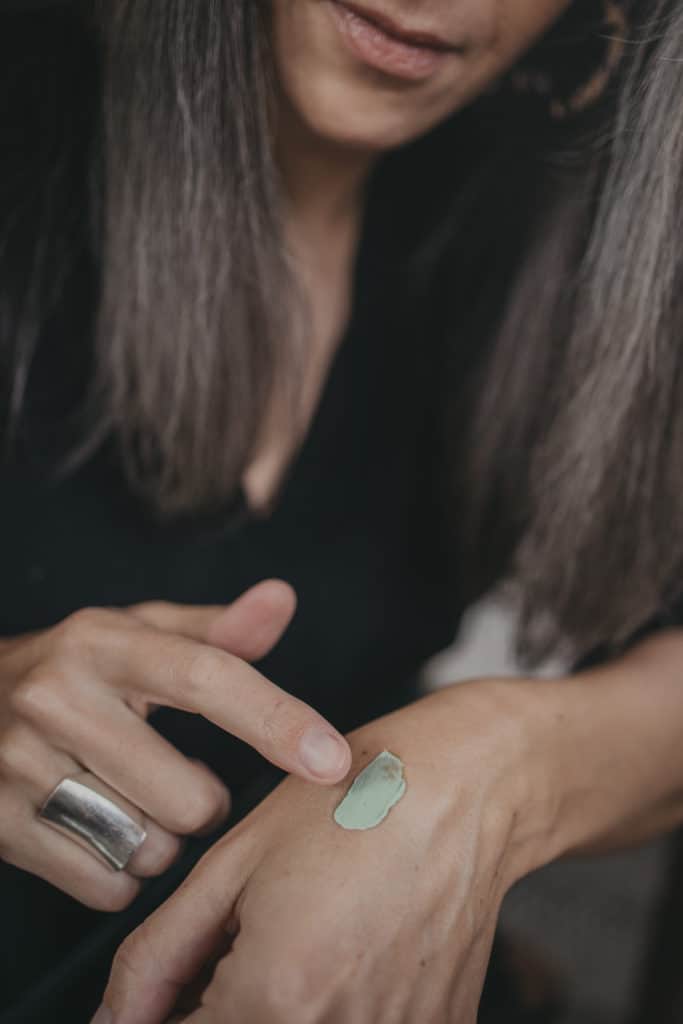
Fitglow Redness Rescue Cream | $69
Chamomile is just one of the superpower ingredients in this designed-for-redness-prone-skin moisturizer. An innovative plant blend called C3 lends a reparative quality to skin, diminishing signs of inflammation, and a green mineral tint counteracts the look of redness.
Save: Code NEWKNEW20 will save you 20% sitewide at Fitglow.
Rosacea is a condition that can be difficult to treat if you don’t find what works for you. Since each person is different, it’s important to remember that there is a huge difference between treating the symptom and treating the root cause. In the case of rosacea, the balance of both has to be there in order to find relief and comfort in your skin long-term.
What brands/products do you turn to for rosacea-prone skin?

TNK Team Note: This article contains affiliate links. TNK uses affiliate links as a source for revenue to fund operations of the business and to be less dependent on branded content. TNK stands behind all product recommendations. Still have questions about these links or our process? Feel free to email us.

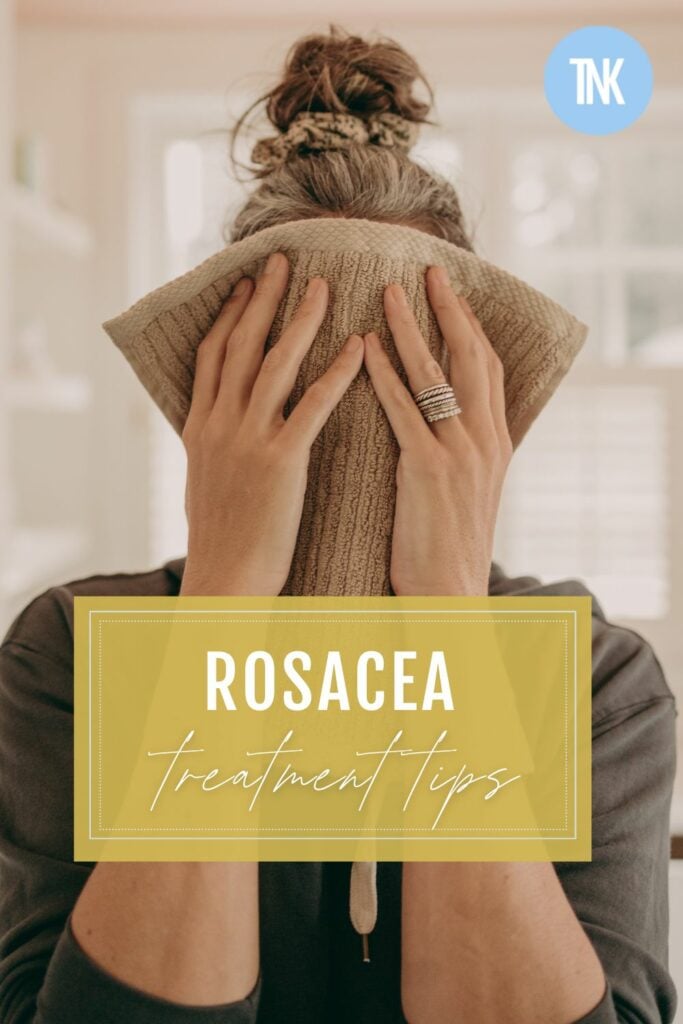
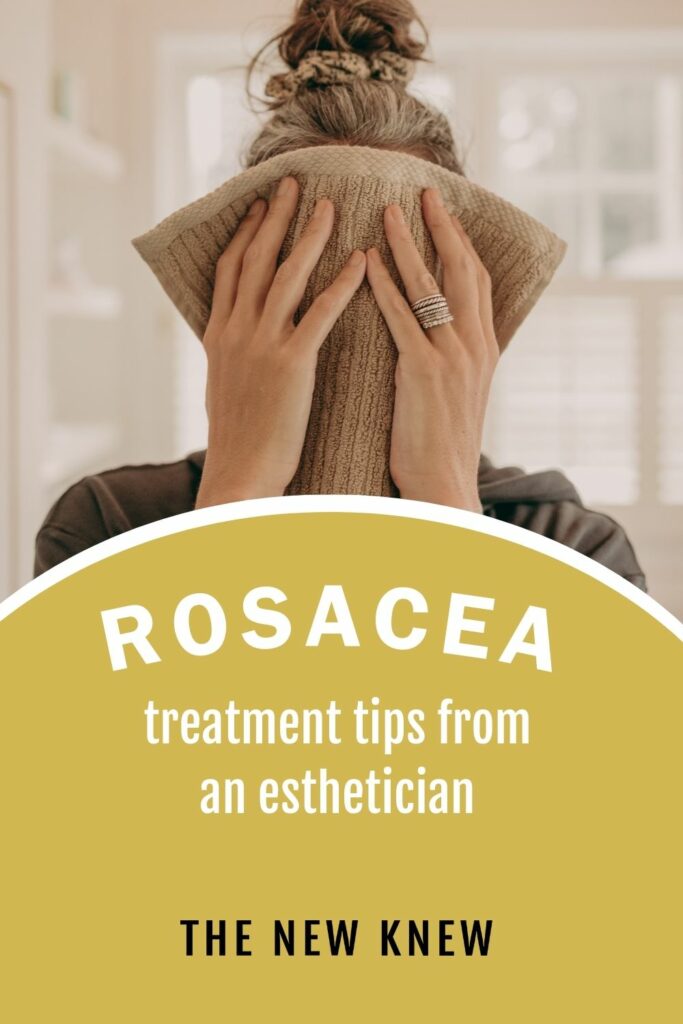
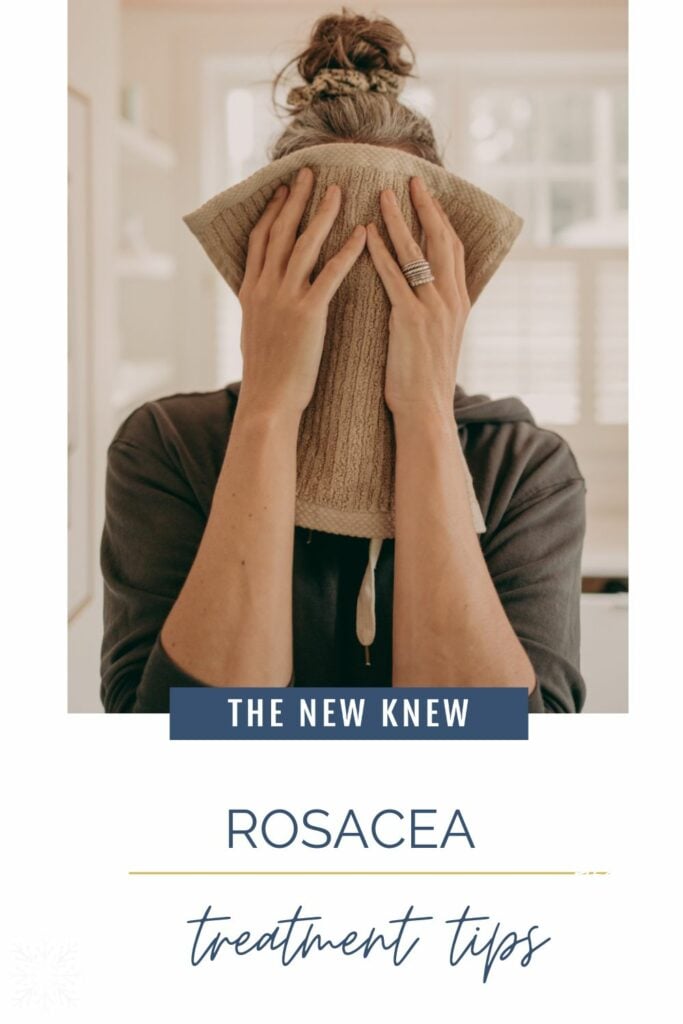
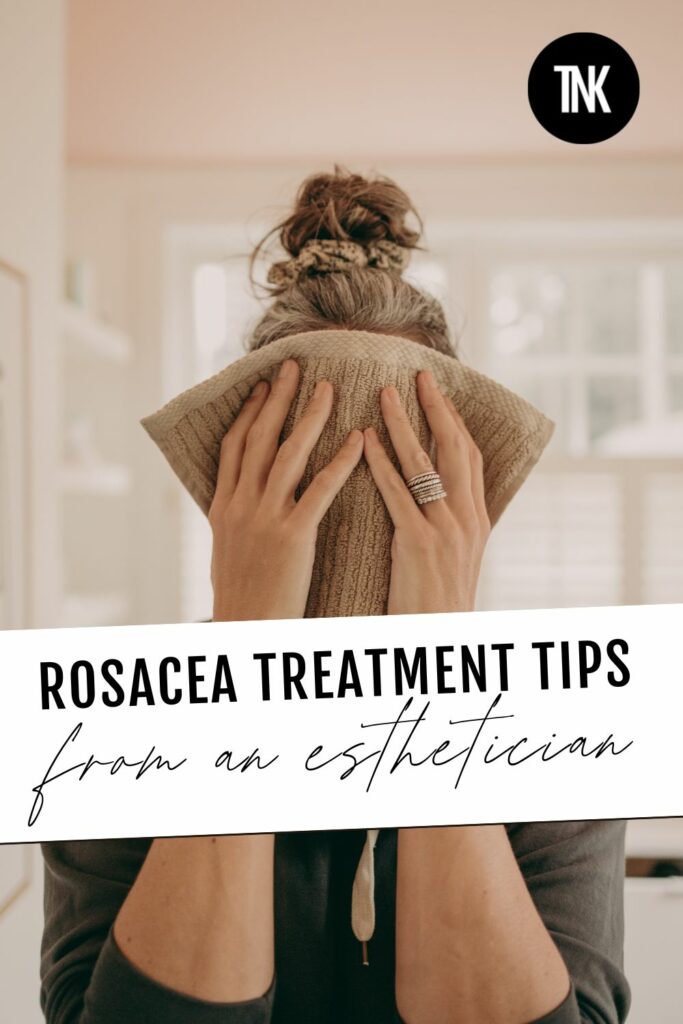
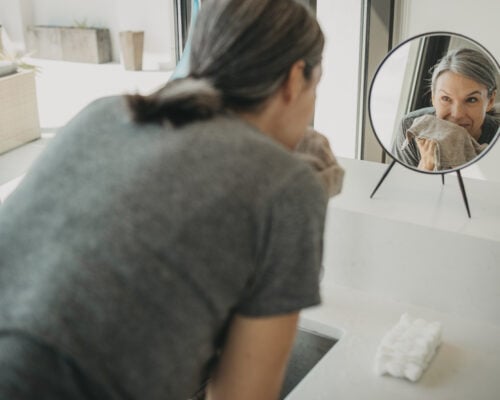
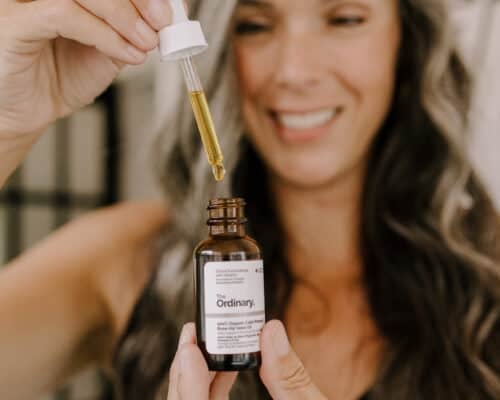

Kalinda Vazquez
January 10, 2023Thanks for this post! I have eczema and my skin can be really reactive so I’ve learned to steer clear of a lot of essential oil heavy formulas. I love the Fit Glow Beauty Sea Ceramide toning mist — I find it to be very gentle. I also swear by the Maqui Berry Whip from Skin Owl, which I use AM and PM as my moisturizer. Their matcha green tea cleansing bar is also amazing. I have eczema around my lips too and have learned I need to avoid anything with peppermint oil or orange oil (sadly both used in a lot of clean beauty lip products). Weleda’s lip butter is great for me and for night I love the Ilia lip mask. Funnily enough I’ve found products with Rose to be really irritating, but green tea, chamomile and aloe all agree with me very well. It’s a journey of trial and error, but worth it when you find the stuff that works!
Lisa Fennessy
January 12, 2023Thank you for sharing your experience Kalinda! I hear great things about Skin Owl too..so glad you are finding what works for you! xo, L
Christine LaJaunie
January 23, 2023I love the Ultimate Skin Serum by Camp Wander. It has Rose and Helichrysum oils in it. Works great!